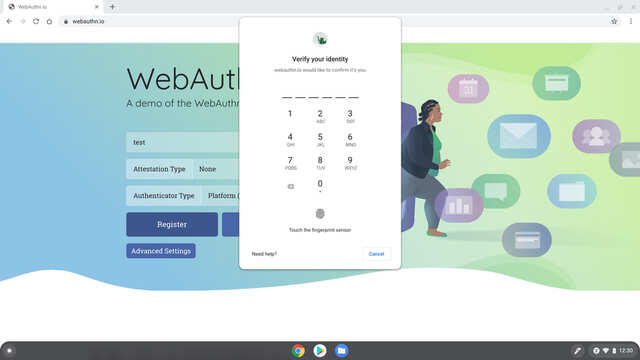Google rolls out PIN and fingerprint sign-in support with new Chrome OS update

Internet search giant Google has announced the new Chrome OS release. With this update, Google has rolled out the support for a faster sign-in experience as well as personalised lock screens, said the company in a blog post.
With Chrome OS, Google has rolled out the option to sign in securely to websites with the PIN or fingerprint.
“Now you can securely sign in to websites with the PIN or fingerprint you’ve set up to unlock your Chromebook with our new Web Authentication (WebAuthn) feature. Websites that support WebAuthn will let you use your Chromebook PIN or fingerprint ID—if your Chromebook has a fingerprint reader—instead of the password you’ve set for the website,” explained Google in the blog post.
“If you use 2-Step Verification to sign-in, your Chromebook PIN or fingerprint ID can be used as the second factor, so you no longer need to pull out your security key or phone to authenticate,” added the company.
As of now, the supported websites include Dropbox, GitHub or Okta and with these, users will be prompted to switch to using WebAuthn for future sign-ins.
Other than this feature, Google has also rolled out support for transforming a user’s Chromebook’s lock screen into what the company calls a personalised smart display.
Users will be able to use the lock screen to check information like the current weather and what music is playing with options to pause a track or skip songs without unlocking your device.
With Chrome OS, Google has rolled out the option to sign in securely to websites with the PIN or fingerprint.
“Now you can securely sign in to websites with the PIN or fingerprint you’ve set up to unlock your Chromebook with our new Web Authentication (WebAuthn) feature. Websites that support WebAuthn will let you use your Chromebook PIN or fingerprint ID—if your Chromebook has a fingerprint reader—instead of the password you’ve set for the website,” explained Google in the blog post.
“If you use 2-Step Verification to sign-in, your Chromebook PIN or fingerprint ID can be used as the second factor, so you no longer need to pull out your security key or phone to authenticate,” added the company.
As of now, the supported websites include Dropbox, GitHub or Okta and with these, users will be prompted to switch to using WebAuthn for future sign-ins.
Other than this feature, Google has also rolled out support for transforming a user’s Chromebook’s lock screen into what the company calls a personalised smart display.
Users will be able to use the lock screen to check information like the current weather and what music is playing with options to pause a track or skip songs without unlocking your device.












All Comments (0)+^ Back to Top
Refrain from posting comments that are obscene, defamatory or inflammatory, and do not indulge in personal attacks, name calling or inciting hatred against any community. Help us delete comments that do not follow these guidelines by marking them offensive. Let's work together to keep the conversation civil.
HIDE